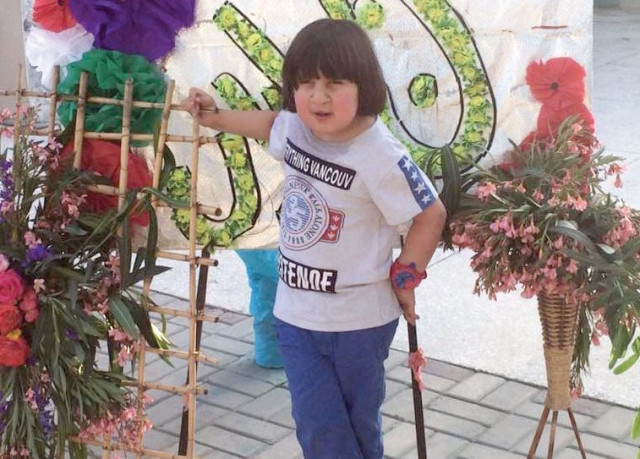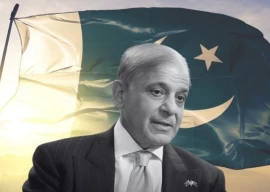
Shah became one of the victims of an outburst of aerial or celebratory gunfire that erupted in the wake of the Pakistani cricket team beating the Indian side at The Oval in London. The child suffered stray bullet injuries. He was hit in the head and has since been in coma, fighting for his life at the Northwest General hospital in Peshawar.
“Doctors say that the next 72 hours are critical,” a grieving Layeq Shah, the father of the unfortunate boy, told The Express Tribune. His voice was choking with tears. One could peep deep into the core of his pain as he spoke. “Please, beg the nation to pray for my son.”
PPP leader held for aerial firing following Champions Trophy final
For those hit by falling bullets, the chance of the wound being fatal was far higher than a typical shooting. The reason was simple -- those unlucky enough to be hit by falling shells were more likely to be struck on the head, and while the bullets were travelling slower after being shot into the sky, they were still capable of smashing skulls.
One can understand Layeq’s helplessness. He, and perhaps hundreds of others like him, would never know the people who have inflicted untold misery upon him and his family. Shooting an automatic weapon into the sky to signal an occasion one welcomes is a popular practice in the country, as the ICC Champions Trophy win has just demonstrated. But it is a potentially fatal activity, which regularly results in the deaths of bystanders.
At least one person was killed and nearly 30 suffered gunshot wounds – mostly children --in Peshawar, Mardan and other parts of Khyber-Pakhtunkhwa when unidentified people resorted to aerial firing to celebrate Pakistan cricket team’s victory late on Sunday.
12 injured in Karachi jubilation firing
For the father of ill-fated Noeen Shah, enjoying celebrations at the cost of innocent lives has no meaning. “Indeed, it is a moment of joy that the green shirts clinched the trophy against India, however it doesn’t bode well to bring sorrow on others by resorting to aerial gunfire.”
“The nation could have celebrated the victory through other means like firework display rather than resorting to guns and bullets,” he lamented as he prayed for the recovery of his son.
The tradition has existed for decades and is popular well beyond the Subcontinent. However, it is most common in places where the state machinery woefully fails to maintain discipline in society, or where gun ownership is common. Anthropologists suggest that the use of gunfire harks back to decades-long violence in the region.
Pakistan's cricket victory: Celebratory firing injures 32 in Peshawar
Professor Jamil Chitrali, who heads the Institute of Peace and Conflict Studies at the University of Peshawar, says people in various regions have used different sorts of sounds to magnify the impact of their message.
“Like for example,” Chitrali maintains, “flute has been used by some tribes in Africa to disseminate their message. Likewise, a special sound is used by the followers of Hinduism to magnify their message.”
“In Khyber-Pakhtunkhwa and the tribal region, guns are recognised as a status symbol since the days of the British Colonialists owing to the wars fought in the region for decades,” the professor went on to say.
Pakistan euphoric after big win over arch rival
“To step back from a bad culture, a community needs some kind of alternative that hasn’t been provided to the people living in the Northwest of Pakistan and Baluchistan,” Chitrali added.
He says the culture of firing guns into the heavens exists in various parts of the country to celebrate different occasions. “In K-P, guns are mostly used on occasions like marriage ceremony, birth of a baby, engagements, circumcision, wining an election, etc.”
Chitrali opined that Punjab and Sindh have somewhat transformed means of celebrating happiness like the cricket lovers did in Lahore by beating drums and dancing to its rhythm to celebrate the Pakistan team’s triumph.
'Papa, I've been shot'
“On the other hand,” he says “People, particularly the young lot, have been deliberately [forced] to involve in the gun culture at the expense of the music culture that has always been suppressed.”
“The traditional Pashtun dance and music can be better alternatives to the sounds of bullets. Ironically, some elements always come up against the music culture in our society,” laments Chitrali, saying, “If the menace [of gun culture] is not transformed, it will stop progress in society.”












COMMENTS
Comments are moderated and generally will be posted if they are on-topic and not abusive.
For more information, please see our Comments FAQ